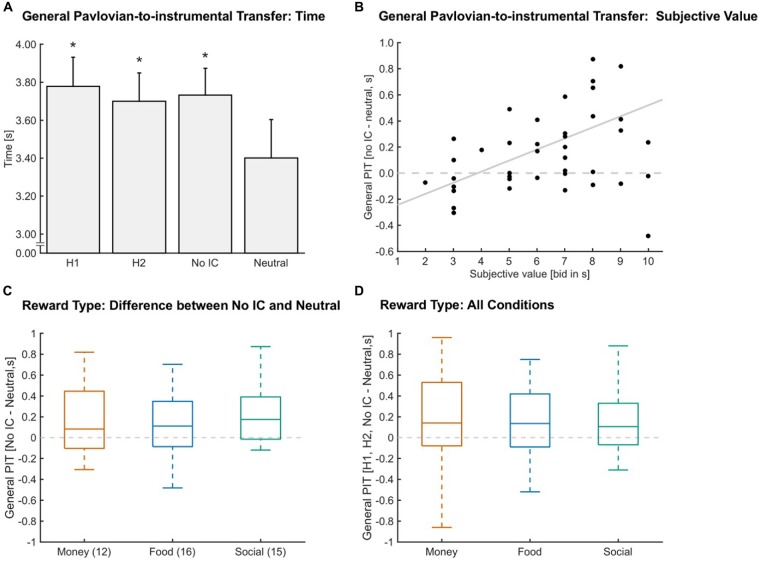Figure 2.
General Pavlovian-to-instrumental transfer (PIT). (A) A general PIT effect was found, given the significant increase in time in target for stimuli paired with a reward (Hand one 1 (H1), Hand two (H2), no instrumental conditioning (No IC)) compared to Neutral (*p ≤ 0.025, N = 44). Error bars indicate the standard error of the mean and asterisks indicate significant Bonferroni-corrected comparisons to Neutral (p ≤ 0.025). (B) General PIT defined as the difference between the No IC—Neutral condition significantly correlated with the subjective value (r = 0.389, p ≤ 0.025, N = 43). Values above the dashed horizontal line show a general PIT. The gray line indicates a linear fit. (C) The influence of reward type (money in orange, food in blue, social in green) on general PIT. Outliers according to a boxplot criterion are not depicted here because we applied a different criterion (mean ± 2.5 standard deviations). No statistical difference was found (p = 0.243, N = 43). Numbers in brackets indicate the number of participants for each reward type. The dashed gray line indicates no difference between No IC and Neutral. (D) General PIT collapsed across all instrumental conditions (H1, H2, No IC) in a within-subjects design depicted for each reward type (money in orange, food in blue, social in green). Outliers according to a boxplot criterion are not depicted here because we applied a different criterion (mean ± 2.5 standard deviations). No statistical difference was found (p = 0.077, N = 42). The dashed gray line indicates no difference between the rewarding conditions and Neutral.

